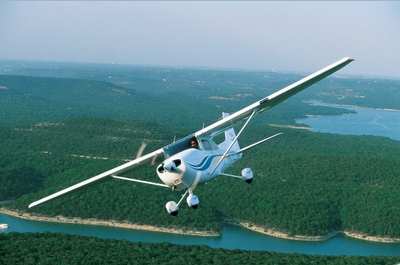Four On Board The Skyhawk Were Fatally Injured
In its preliminary report for an accident in Veneta, OR on June 23, the NTSB reports that witnesses say the engine of the Cessna 172 "suddenly just stopped" while the airplane was climbing out after departure from Crow-Mag Airport (OR33), near Veneta. A friend of the pilot told the board that the pilot was just taking some people of a "scenic sightseeing tour" of the area near the airport. The board only said that it had secured all of the wreckage of the airplane, and had moved it to a secure location for examination.

NTSB Identification: WPR12FA274
14 CFR Part 91: General Aviation
Accident occurred Saturday, June 23, 2012 in Veneta, OR
Aircraft: CESSNA 172, registration: N5781A
Injuries: 4 Fatal.
This is preliminary information, subject to change, and may contain errors. Any errors in this report will be corrected when the final report has been completed.
On June 23, 2012, about 1513 Pacific daylight time, a Cessna 172, N5781A, collided with trees and terrain during takeoff initial climb from runway 15 at the Crow-Mag Airport (OR33), near Veneta, Oregon. The commercial pilot and three passengers were fatally injured and the airplane sustained substantial damage. The airplane was registered to a private individual and operated by the pilot under the provisions of Title 14 Code of Federal Regulations Part 91 as a personal flight. Visual meteorological conditions prevailed and no flight plan was filed. The local flight was originating at the time of the accident.
Several witnesses located adjacent to the accident site reported hearing the airplane takeoff from the airport near their residences. Witnesses stated that the airplane's engine sounded normal and suddenly just stopped. One witness, who was outside his home, just south of the runway, reported that while he was outside his home, he saw the accident airplane fly over 100-foot tall trees north of his position at an altitude of about 150 to 200 feet above ground level (agl) and that the engine sounded normal. The witness said that while he directed his attention away from the airplane momentarily, he heard the engine suddenly stop and he immediately looked back and observed the airplane descend into 100-foot tall trees.

A friend of the pilot reported to National Transportation Safety Board (NTSB) investigator-in-charge (IIC) that the purpose of the accident flight was to provide a scenic tour around the vicinity of the airport for the three passengers.
Examination of the accident site by the NTSB IIC revealed that the airplane impacted trees about 0.2 miles south of OR33. Wreckage debris and broken tree limbs were scattered about 80 feet along an approximate 174-degree magnetic heading from a cluster of scraped and broken trees. The right wing was lodged in one of the damaged trees at the beginning of the debris path, about 70 to 75 feet above ground level. The main wreckage came to rest inverted about 80-feet from the initial cluster of trees. All major structural components of the airplane were located within the debris path. The wreckage was recovered to a secure location for further examination.
(File photo of Cessna 172. Not accident airplane)
 Classic Aero-TV: The Switchblade Flying Car FLIES!
Classic Aero-TV: The Switchblade Flying Car FLIES! ANN FAQ: Q&A 101
ANN FAQ: Q&A 101 ANN's Daily Aero-Term (04.12.24): Discrete Code
ANN's Daily Aero-Term (04.12.24): Discrete Code ANN's Daily Aero-Term (04.13.24): Beyond Visual Line Of Sight (BVLOS)
ANN's Daily Aero-Term (04.13.24): Beyond Visual Line Of Sight (BVLOS) ANN's Daily Aero-Linx (04.13.24)
ANN's Daily Aero-Linx (04.13.24)




